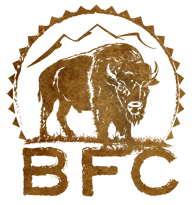For Immediate Release:
April 12, 2005
Contact:
Stephany Seay, 406-646-0070
West Yellowstone, Montana - After running them off of their calving grounds at Horse Butte over ten miles to the Duck Creek Capture Facility, the Montana Department of Livestock (DOL) agents captured eighteen of America's last wild, genetically pure buffalo on Monday. Today, the DOL captured at least 14 more buffalo, running them three miles up highway 191 to the Duck Creek Capture Facility.
These recent operations will likely send more wild buffalo to slaughter, more calves to a quarantine facility, and agents will likely conduct a post-capture hazing operation, returning them to Horse Butte, public land where wild buffalo are currently not tolerated. At least one of the buffalo captured yesterday was previously hazed, captured, tested, and released earlier this year. Bull bison, that pose no risk of transmitting brucellosis, have also been captured and may be sent to slaughter.
Since October 2004, the Department of Livestock has captured at least 78 Yellowstone buffalo, slaughtered 21, sent six to quarantine, and released 19 on Horse Butte.
"The DOL's hazing and capture operations of wild buffalo engaged in their spring migration are endangering motorists who come to the region to see wildlife found nowhere else in the country," said Mike Mease of the Buffalo Field Campaign.
Governor Brian Schweitzer has said that buffalo will enjoy more tolerance in Montana. In his statements, Schweitzer said that management of buffalo and the protection of Montana's brucellosis-free status should be determined by "science, not hyperbole," and that the DOL is "ill-equipped" to manage wild buffalo for the State of Montana.
"Governor Schweitzer needs to turn his words into action," said Mease. "Wild buffalo are being managed to death, and he has the power to end the state's zero-tolerance policy and provide habitat for wild buffalo in Montana."
" The scientific value of the Yellowstone herd cannot be overstated and their protection should not be compromised," said Dr. Andrew Dobson, professor at Princeton University in the Department of Ecology and Evolutionary Biology.
Inaccurate Brucellosis Testing
Buffalo develop immunities to the European livestock disease brucellosis and retain long-term anti-bodies. The test the government uses to determine which buffalo are slaughtered and which are released is not inaccurate because it merely determines exposure to the livestock disease. The percentage of Yellowstone buffalo that actually carry any brucellosis bacteria is only from 2 to 20 percent.
Dr. Paul Nicoletti, DVM and emeritus professor at the University of Florida, and a leading expert on brucellosis stated, "At present, the agencies either slaughter all captured bison or blood test captured bison sending all seropositive and pregnant bison to slaughter. This methodology, since the blood tests only determine exposure, results in a large number of non-infected bison being killed."
There has never been a documented case of wild buffalo transmitting brucellosis to domestic cattle.
"A domestic cow has a better chance of winning the Montana lottery than contracting brucellosis from wild buffalo," said Stephany Seay of the Buffalo Field Campaign.
"The agencies," continued Nicoletti, "though in possession of sufficient data to prepare a comprehensive risk assessment, have refused to do so preventing the development of more rational management strategies."
Quarantining Wild Buffalo
The DOL's capture operations are also serving efforts to domesticate wild buffalo calves. Captured bison calves no more than ten months old are being sent to a joint state and federal quarantine facility near Gardiner, in an effort to determine if quarantining wild buffalo is "feasible." The orphaned bison calves, after being hazed, captured, torn from their mothers and family groups, are trucked to a former elk-ranch, where they remain fenced in, and will undergo rigorous testing for years to come. More than half will be slaughtered. Those that survive will not have any contact with elder-buffalo, nor be able to live out their lives as a wild, migratory species.
"While the state touts quarantine as an alternative to slaughter, they offer this domestication process as an ultimatum to Native Americans who want to return wild buffalo to tribal lands. Quarantine is merely an attempt to domesticate and imprison the Yellowstone herd," said Dan Brister of the Buffalo Field Campaign. "They tried to breed the culture out of the Native Americans, and now they want to breed the wildness out of the buffalo. Once the wildness is gone, it's gone forever."
Buffalo Field Campaign is the only group working in the field, everyday, to stop the slaughter of the wild Yellowstone buffalo. Volunteers defend the buffalo on their native habitat and advocate for their protection.







